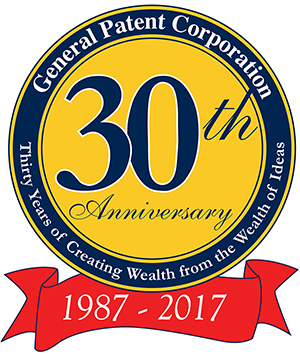 The following is a short rundown of the various types of intellectual property, their duration and the rights they confer. For a more in-depth treatment of this subject, please see Essentials of Intellectual Property, by Alexander I. Poltorak and Paul J. Lerner, John Wiley and Sons Publishers, 2002.
The following is a short rundown of the various types of intellectual property, their duration and the rights they confer. For a more in-depth treatment of this subject, please see Essentials of Intellectual Property, by Alexander I. Poltorak and Paul J. Lerner, John Wiley and Sons Publishers, 2002.
Patents, copyrights and trademarks, as well as trade dress, trade secrets and related rights, are collectively known as "intellectual property" (IP). Patents can be used to prevent others from using or selling covered technology or business method, which must be both objectively novel and unobvious to those familiar with pertinent technology.
Patents last for twenty years from filing of the patent application, are functional only after issue, and only in the country where issued. Patents are costly and difficult to obtain.
Copyrights may last up to seventy years beyond an author's lifetime, and are obtained with much less difficulty and expense. Copyrights are protected as soon as the work is created, both inside and outside of the U.S. Registration, involving a $30.00 fee, is required only if the copyright is being infringed and the copyright holder desires to sue the infringer. However, copyrights are somewhat weaker than patents because independently created, identical works do not infringe.
Trademark rights generally arise automatically upon first commercial use, and have a potentially limitless duration. Trademarks need not be registered to stop others from using trademarks that are so alike that customers may be deceived as to the source of goods or services. Nevertheless, federal registration does confer some advantages.
Lawyers trained in science or engineering have usually dominated IP practice. While technical training and passing a special examination are needed to obtain patents for others, after a patent issues any attorney can assign, license or otherwise dispose of the patent, or sue infringers.
For our purposes in this website, we will focus on patents only. Three distinct kinds of patents are available in the U.S. - utility, design and plant. A utility patent is what is usually meant by the word "patent", and these include machines, industrial processes, compositions of matter and articles of manufacture. Design patents protect ornamental features rather than the function of the device, and last fourteen years from the date granted instead of twenty years from filing as with utility patents. Plant patents cover the discovery of previously uncultivated plants, or the breeding of novel plants, and must be asexually propagated.
All patents require Patent and Trademark Office (PTO) approval, i.e. the PTO must issue the patent before any rights are conferred. A prior art search, although not required, is generally advisable. If an invention is fully disclosed in an issued patent or other printed document, it is not novel and is therefore not patentable. Also, where one or more aspects of the invention were previously known, the applicant must convince an examiner that the invention would have been unobvious to those skilled in the art at the time the invention was made. The patent application must be filed in the inventor's name, regardless of eventual or final ownership.
An application consists of a description of the invention (the "specification"), drawings (where applicable), a fee, and a declaration that the applicant is the first and true inventor. The specification must describe the invention in terms that enable those skilled in the art to practice it, and conclude with one or more "claims". The specification explains the inventor's contributions, and the claims identify what is believed to be protectable under the patent.
Upon receipt, the PTO usually gives applications a filing date and serial number, and it is then assigned to a patent examiner. The patent examiner may object to the application on formal grounds, or disallow one or more claims as substantively unpatentable. This process may take anywhere from eighteen months to several years, during which time the PTO attempts to ensure that the application is complete, and that it enables others to practice the invention (i.e., that the claims are reasonably related to the inventor's contribution, and that they describe a proper subject matter that is useful, novel and not obvious).
The novelty requirement is a serious trap for the inexperienced, but is easily avoided by discussing the situation with an expert in the field. If an attorney cannot convince the patent examiner that the claims are allowable, they may be abandoned or narrowed, an application may be abandoned or re-filed, or appeals may be taken. After an application satisfies the PTO, it is issued and a further fee is paid. Only one patent may issue for an invention, so keeping notes on when and how the invention was made is important, proving that you were the first to invent this innovative device.
Patents can prevent others from making the protected device for the duration of the patent, and have the attributes of personal property. No rights exist before issue, but patent applications may be assigned and licensed to others.
If infringement is discovered and negotiations fail, mediation and arbitration are possible. Otherwise, a lawsuit must be brought in federal court. Besides being able to seek relief from direct infringers, patentees may also confront those who induce or otherwise contribute to infringement. Remedies may include injunction and recovery of up to three times damages. At a minimum, a reasonable royalty is awarded and, in exceptional cases, attorney fees. Two basic defenses, noninfringement and invalidity, may be (and generally are) asserted in any IP infringement lawsuit.


